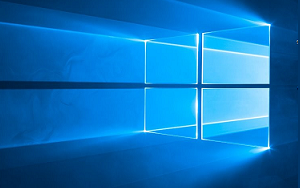Setting up a VPN on Android devices is a straightforward process that enhances your online privacy and security. This guide walks you through selecting a VPN service, installing the VPN app, and configuring VPN settings on your Android smartphone or tablet.
Comprehensive Guide to Setting Up a VPN on Android
In today's digital age, online privacy and security are paramount. Virtual Private Networks (VPNs) have become an essential tool for safeguarding personal data and ensuring secure internet connections. This article provides a detailed step-by-step guide on setting up a VPN on Android devices, helping you enhance your security and access restricted content with ease.
1. Understanding VPNs and Their Benefits
Before diving into the setup process, it's important to understand what a VPN is and why it's beneficial:
- Privacy Protection: VPNs encrypt your internet traffic, ensuring your online activities remain private.
- Security Enhancement: VPNs protect against hackers and cyber threats, especially on public Wi-Fi.
- Accessing Geo-Restricted Content: VPNs allow you to bypass regional restrictions and access content from different countries.
2. Choosing the Right VPN Service
With numerous VPN services available, selecting the right one is crucial:
- Research and Reviews: Look for reputable VPN providers with positive user reviews and a strong track record.
- Features: Consider features like speed, number of servers, ease of use, and customer support.
- Pricing: Compare pricing plans and choose a service that fits your budget. Many providers offer free trials or money-back guarantees.
3. Installing the VPN App on Your Android Device
Once you've chosen a VPN service, follow these steps to install the app:
- Visit the Google Play Store: Open the Google Play Store on your Android device.
- Search for Your VPN Provider: Enter the name of your chosen VPN service in the search bar.
- Download and Install: Select the official app from the search results and tap 'Install' to download and install it on your device.
4. Configuring VPN Settings
After installing the VPN app, you'll need to configure the settings:
- Open the VPN App: Launch the VPN app from your home screen or app drawer.
- Log In: Enter your account credentials to log in. If you don't have an account, you'll need to sign up first.
- Select a Server Location: Choose a server location from the list. The closer the server, the better the speed.
- Enable VPN Connection: Tap the connect button to establish a VPN connection. You'll see a key icon in your status bar indicating an active VPN connection.
5. Manually Setting Up a VPN on Android
If you prefer not to use a dedicated app, you can manually configure a VPN:
- Open Settings: Go to 'Settings' on your Android device.
- Network & Internet: Tap on 'Network & Internet' or 'Connections' depending on your device.
- VPN: Select 'VPN' from the options.
- Add VPN Profile: Tap 'Add VPN' or the plus icon to create a new VPN profile.
- Enter VPN Details: Enter the VPN name, type (e.g., PPTP, L2TP/IPSec, OpenVPN), and server address. Ensure you have these details from your VPN provider.
- Save and Connect: Save the profile and tap it to connect. Enter your credentials if prompted.
6. Testing Your VPN Connection
Once connected, it's essential to test your VPN to ensure it's working correctly:
- Check IP Address: Use a service like What Is My IP Address to verify your IP has changed.
- Test Speed: Use a speed test app to check if your internet speed is adequate.
- Verify Security: Visit IPLeak to ensure there are no DNS or IP leaks.
7. Troubleshooting Common VPN Issues
If you encounter any issues, consider these troubleshooting tips:
- Restart Device: A simple restart can resolve many connectivity issues.
- Update App: Ensure your VPN app is up to date.
- Change Server: If a server is slow or unresponsive, switch to a different server.
- Reinstall App: Try uninstalling and reinstalling the VPN app if problems persist.
Conclusion
Setting up a VPN on your Android device is a straightforward process that significantly enhances your online security and privacy. By following this comprehensive guide, you can easily configure a VPN, ensuring a safer internet browsing experience. Stay secure and enjoy unrestricted access to content worldwide with your newly configured VPN.







